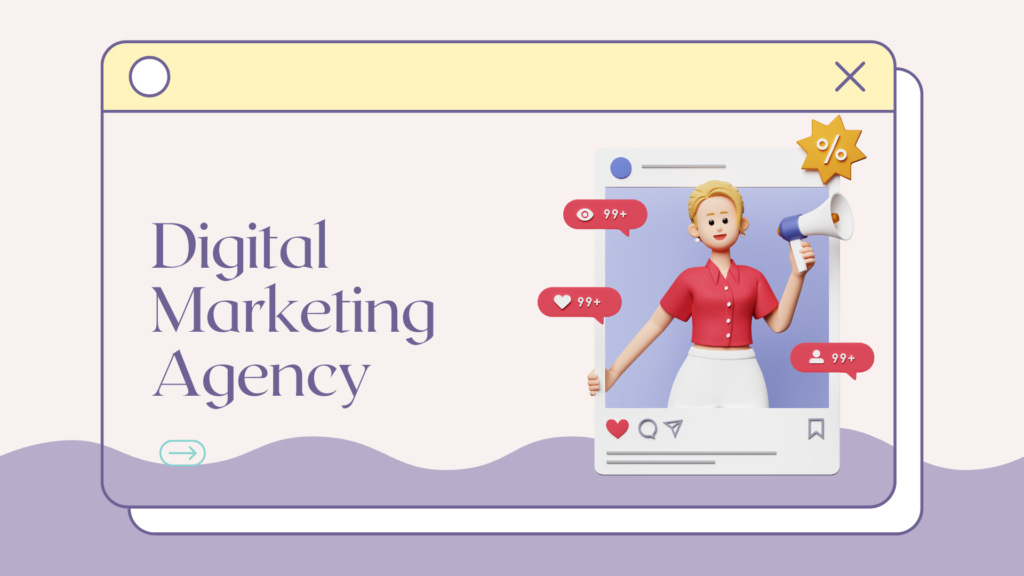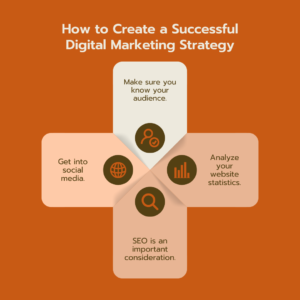“Common Mistakes in Digital Marketing and How to avoid them”
Table Of Content
- Introduction
- Overview of Digital Marketing Mistakes
- Why Mistakes Happen
- Neglecting SEO
- Importance of SEO
- Common SEO Mistakes
- How to Avoid SEO Errors
- Targeting the Wrong Audience
- Identifying Your Ideal Customer
- Mistakes in Audience Targeting
- How to Refine Audience Targeting
- Ignoring Mobile Optimization
- The Shift to Mobile Users
- Mistakes in Mobile Optimization

1. Introduction
Digital marketing is a powerful tool for businesses to reach and engage their audience, but it’s not without its challenges. Many marketers, whether beginners or experienced, often make mistakes that can hinder the effectiveness of their campaigns. From targeting the wrong audience to neglecting SEO or failing to analyze performance data, these errors can lead to wasted resources and missed opportunities. Understanding these common pitfalls and learning how to avoid them is crucial for optimizing your digital marketing strategy and achieving long-term success.
overview of Digital Marketing Mistakes
Digital marketing Agency mistakes often arise from inadequate strategies, poor audience targeting, and neglecting essential elements like SEO and mobile optimization. These errors can lead to wasted resources and missed opportunities, impacting overall campaign effectiveness. Addressing these common pitfalls is crucial for optimizing digital marketing efforts and achieving better result.
Why Mistakes Happen

- Lack of Knowledge or Expertise: Marketers may not fully understand the platforms, tools, or strategies they’re using, leading to errors in execution.
- Rapid Changes in Technology and Trends: The fast-evolving digital landscape makes it challenging to stay updated, causing outdated strategies or missed opportunities.
- Overlooking Data and Analytics: Ignoring or misinterpreting data leads to uninformed decisions, resulting in ineffective campaigns.
- Poor Planning: Without a clear strategy and defined goals, marketing efforts become disorganized and less focused, increasing the risk of mistakes.
- Inability to Keep Up with Trends: The digital landscape changes quickly, and failing to adapt to new trends, algorithms, or best practices can result in outdated marketing approaches.
2. Neglecting SEO
- Importance of SEO In Digital Marketing
SEO (Search Engine Optimization) is crucial for digital marketing because it enhances the visibility and discoverability of your website in search engine results. Here’s why SEO is so important:
Increased Organic Traffic: Effective SEO helps your website rank higher in search engine results pages (SERPs), driving more organic (non-paid) traffic to your site.
Better User Experience: SEO involves optimizing your site’s structure and content, which improves navigation and usability, providing a better overall experience for users.
Higher Credibility and Trust: Websites that rank higher in search results are often perceived as more credible and trustworthy by users.
Here Are Some Common Mistakes :
1.
Unoptimized Image File names and alt text.
2.
Low Backlink Quality
3.
failing To Resolve Errors.
4.
Overusing 301 Redirect Hops
5.
Leaving Pages As Nolndex.
6.
Staging Site Remains Indexable.
7.
Not Creating Cutom Meta Information.
- Common SEO Mistakes
Ignoring Keyword Research: Failing to conduct thorough keyword research can result in targeting irrelevant or overly competitive keywords, which diminishes the effectiveness of your SEO efforts.
Overlooking On-Page SEO: Not optimizing on-page elements like title tags, meta descriptions, header tags, and image alt text can hinder your ability to rank well in search results.
Neglecting Mobile Optimization: With the increasing use of mobile devices, not ensuring that your site is mobile-friendly can lead to poor user experience and lower rankings on mobile search results.
Using Duplicate Content: Having duplicate content on your site can confuse search engines and lead to lower rankings, as search engines may struggle to determine which version of the content is the most relevant.
Ignoring Technical SEO: Issues such as slow page load times, broken links, and incorrect use of redirects can negatively impact your site’s search engine rankings and user experience.
- How to Avoid SEO Errors
To avoid SEO errors and enhance your website’s search engine performance, consider these best practicesConduct Thorough Keyword Research:
Conduct Thorough Keyword Research: Use tools like Google Keyword Planner, SEMrush, or Ahrefs to identify relevant keywords with a balance of search volume and competition. Focus on both short-tail and long-tail keywords to target various search intents.
Optimize On-Page Elements: Ensure that key on-page elements are optimized:
- Title Tags: Include primary keywords and keep them under 60 characters.
- Meta Descriptions: Write compelling descriptions with relevant keywords, ideally under 160 characters.
- Header Tags: Use H1 tags for main headings and H2/H3 for subheadings, incorporating keywords where appropriate.
- Image Alt Text: Describe images with relevant keywords to improve accessibility and indexability.
Ensure Mobile Optimization: Make sure your website is responsive and provides a smooth user experience on mobile devices. Use Google’s Mobile-Friendly Test to check and fix any issues.
Avoid Duplicate Content: Use canonical tags to indicate the preferred version of a page and avoid duplicate content issues. Regularly check for and resolve any duplicate content problems using tools like Copyscape or Siteliner.
Focus on Technical SEO:
- Site Speed: Improve page load times by optimizing images, leveraging browser caching, and minimizing JavaScript/CSS files.
- Fix Broken Links: Regularly check for and fix broken links using tools like Screaming Frog or Google Search Console.
- Use Proper Redirects: Implement 301 redirects for permanently moved content and avoid using 302 redirects incorrectly.
Monitor and Analyze Performance: Set up Google Analytics and Google Search Console to track key metrics such as traffic, bounce rates, and search rankings. Use this data to make informed decisions and refine your SEO strategy.
Stay Updated with SEO Trends: SEO is constantly evolving. Keep up with the latest trends and algorithm updates by following reputable SEO blogs and industry news.
By implementing these practices, you can minimize SEO errors and improve your website’s visibility and performance in search engine results.
3. Targeting the Wrong Audience in your agency

- Identifying Your Ideal Customer
Identifying your ideal customer is a crucial step in any marketing strategy, as it helps you focus your efforts on the people most likely to engage with your brand and convert into customers. Here’s how to do it:
Analyze Your Current Customers
- Review Customer Data: Look at demographics, behaviors, and purchasing habits of your current customers.
- Segment Your Audience: Group customers based on similarities like age, location, interests, and buying frequency.
Define Customer Pain Points and Needs
- Understand Problems: Identify the key challenges or pain points your product or service solves for your customers.
- Value Proposition: Define how your solution meets their needs or offers value.
Create Customer Personas
- Demographic Information: Outline age, gender, income, job role, and location.
- Psychographics: Understand their lifestyle, values, interests, and spending habits.
- Behavioral Traits: Focus on how they interact with your brand, where they spend time online, and their buying behavior.
Analyze Competitors
- Who Are They Targeting?: Review competitor marketing to identify overlapping audience segments and potential gaps.
- Differentiate Your Approach: Define what makes your target audience different and tailor your strategy accordingly.
- Mistakes in Audience Targeting
Targeting Too Broad of an Audience
- Mistake: Trying to reach everyone leads to wasted ad spend on people who aren’t interested in your product.
- Solution: Narrow your audience based on key demographics, interests, and behaviors that align with your ideal customer profile.
Ignoring Buyer Personas
- Mistake: Failing to create detailed buyer personas can result in irrelevant messaging and missed connections with potential customers.
- Solution: Develop detailed buyer personas based on demographic, psychographic, and behavioral data to ensure more personalized targeting.
Overlooking Audience Segmentation
- Mistake: Treating all customers as the same and failing to segment based on factors like purchase history, interests, or location.
- Solution: Segment your audience into smaller, more relevant groups to tailor your campaigns and improve engagement.
Not Using Data-Driven Insights
- Mistake: Relying on assumptions about your audience instead of using real data can lead to ineffective targeting.
- Solution: Use analytics tools to understand who is engaging with your brand, and adjust your targeting based on their actual behaviors and preferences.
Failing to Update Audience Targeting
- Mistake: Audience preferences and behaviors change over time, and not updating your targeting strategy leads to outdated and irrelevant campaigns.
- Solution: Regularly review and adjust your targeting strategy using up-to-date data and market trends.
Ignoring Negative Targeting
- Mistake: Not excluding irrelevant audiences (e.g., people unlikely to convert) results in wasted budget.
- Solution: Use negative targeting options to exclude specific demographics or interests that are not aligned with your campaign goals.
Over-relying on Demographics
- Mistake: Focusing only on age, gender, or location without considering behavior or intent can limit the effectiveness of your campaigns.
- Solution: Combine demographic targeting with behavioral, interest, and contextual data to reach more relevant audiences.
How to Refine Audience Targeting

How to Refine Audience Targeting
Refining audience targeting is essential for ensuring that your marketing efforts reach the right people, leading to better engagement and higher conversion rates. Here’s how to do it effectively:
Leverage Data and Analytics
- Use Tools: Platforms like Google Analytics, Facebook Audience Insights, and social media analytics offer in-depth information about your current audience’s demographics, behavior, and preferences.
- Identify Patterns: Analyze this data to identify trends in user behavior, locations, and interests that align with your goals.
Develop Detailed Buyer Personas
- Create Personas: Develop detailed profiles of your ideal customers based on demographic (age, gender, location) and psychographic (interests, values, lifestyle) data.
- Refine Over Time: Continuously update these personas as you gain more insights into customer behavior and preferences.
Segment Your Audience
- Break Into Subgroups: Segment your audience into smaller, more targeted groups based on behaviors, interests, or stages in the customer journey (e.g., prospects, first-time buyers, repeat customers).
- Tailor Campaigns: Customize content and messaging for each segment to address their specific needs, pain points, and buying motivations.
Utilize Behavioral Targeting
- Track User Behavior: Use tracking tools to monitor how users interact with your website, such as pages visited, time spent, and actions taken (e.g., adding items to the cart).
- Retarget: Implement retargeting campaigns to reach users who have shown interest but haven’t converted, offering them relevant content or promotions.
Incorporate Lookalike Audiences
- Identify Similar Users: Use tools like Facebook Lookalike Audiences or Google Similar Audiences to find new users who share traits with your current customers.
- Expand Reach: Lookalike targeting helps broaden your reach while still focusing on individuals likely to be interested in your brand.
Apply Negative Targeting
- Exclude Irrelevant Audiences: Use negative targeting to exclude people who are unlikely to convert or don’t fit your ideal customer profile (e.g., excluding irrelevant age groups or locations).
- Optimize Ad Spend: This ensures your budget is used more efficiently by focusing only on potential customers.
A/B Test Targeting Strategies
- Test Different Audiences: Run A/B tests with different audience segments to compare performance and engagement.
- Refine Based on Results: Use the insights gained from testing to adjust and optimize your targeting strategy for better results.
Stay Updated on Trends and Preferences
- Monitor Market Changes: Regularly review industry trends, customer preferences, and competitor strategies to refine your audience targeting.
- Adapt to Changes: As customer behaviors evolve, adjust your targeting to stay aligned with their current needs and interests.
By continuously analyzing and refining your audience targeting, you can improve the relevance and effectiveness of your campaigns, leading to higher engagement, conversions, and return on investment (ROI).
4.Ignoring Mobile Optimization
- The Shift to Mobile Users
The Shift to Mobile Users
Over the past decade, there has been a significant shift in user behavior as more people access the internet via mobile devices. This shift has transformed the way businesses approach digital marketing and web development. Here are the key aspects of this shift:
Mobile Traffic Dominance
- Mobile devices now account for more than half of all global web traffic. This means that businesses must prioritize mobile optimization to reach and engage users effectively.
Mobile-First Indexing
- Search engines like Google have adopted mobile-first indexing, meaning they primarily use the mobile version of websites for ranking and indexing. Websites that are not mobile-optimized may see lower search rankings, impacting visibility and traffic.
Changing User Behavior
- Users on mobile devices tend to have shorter attention spans, expect fast load times, and seek a seamless browsing experience. Slow or unresponsive sites lead to higher bounce rates and lost opportunities.
Rise of Mobile Shopping and Payments
- E-commerce on mobile has grown significantly, with many consumers making purchases directly from their smartphones. Ensuring that your website supports mobile transactions and easy navigation is critical to capturing sales.
- Mobile Apps and Engagement
- Beyond websites, mobile apps have become a key way to engage users. Many businesses offer dedicated apps to provide personalized experiences, push notifications, and easier access to services.
Social Media and Mobile Usage
- Social media platforms, which are heavily accessed via mobile, play a vital role in driving traffic to websites. Ads and content on these platforms must be designed for mobile to be effective.
Key Takeaways:
- Mobile Optimization: Ensure your website is mobile-responsive, with fast load times and easy navigation.
- Mobile-Friendly Design: Focus on simplicity, clear calls-to-action, and mobile-optimized content.
- Test for Mobile: Regularly test your website and marketing materials on mobile devices to ensure a smooth experience.
Adapting to the shift toward mobile users is essential for businesses to stay competitive and deliver a positive user experience in today’s mobile.
- The Shift to Mobile Users
The Shift to Mobile Users
The shift to mobile users has become a defining trend in the digital landscape, as more people now access the internet primarily through their smartphones and tablets. Mobile traffic has surpassed desktop usage, and this transformation is reshaping how businesses approach digital marketing and website optimization.
Key impacts of this shift include:
- Mobile-First Indexing: Search engines, like Google, prioritize mobile-friendly websites for ranking, making mobile optimization critical for SEO.
- Mobile Commerce Growth: Consumers increasingly shop via mobile devices, requiring seamless, fast, and secure mobile shopping experiences.
- Mobile-Optimized Design: Websites need to be responsive, fast-loading, and easy to navigate to meet the expectations of mobile users, who often have shorter attention spans.
Adapting to this mobile-first world is essential for businesses to remain competitive and provide a user-friendly experience.
- Mistakes in Mobile Optimization How to Ensure Mobile Responsiveness
Use a Responsive Web Design (RWD)
- Ensure your website automatically adjusts its layout based on the user’s device screen size. A responsive design will resize images, fonts, and content elements for an optimal viewing experience on mobile devices.
Prioritize Fast Load Times
- Optimize images by compressing them, minimize the use of large videos, and reduce the amount of code (CSS, JavaScript) that needs to load. Use tools like Google PageSpeed Insights to check and improve page load times.
Simplify Navigation
- Implement easy-to-use mobile navigation features such as hamburger menus, thumb-friendly buttons, and clear call-to-action (CTA) buttons. Ensure menus and clickable elements are large enough to be easily tapped with a finger.
Optimize for Touchscreen Interactions
- Make buttons, links, and form fields easy to tap. Avoid placing links or buttons too close together to prevent accidental clicks. Touch-friendly design improves user experience on mobile.
Test Across Multiple Devices
- Regularly test your website’s responsiveness across various mobile devices and screen sizes (smartphones, tablets, phablets). Use tools like Google’s Mobile-Friendly Test or Browser Stack to identify issues across different devices.
By focusing on strategic planning, data analysis, and a user-centered approach, businesses can minimize digital marketing mistakes and maximize their return on investment (ROI).